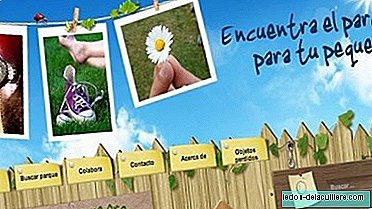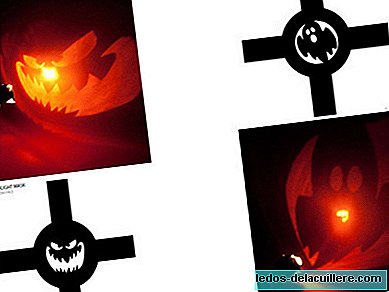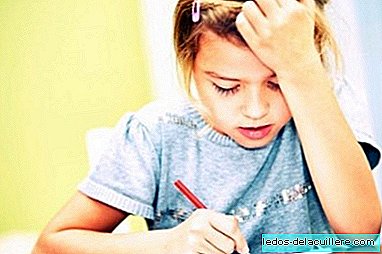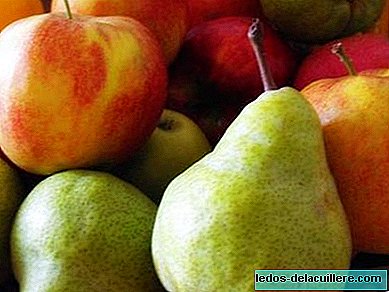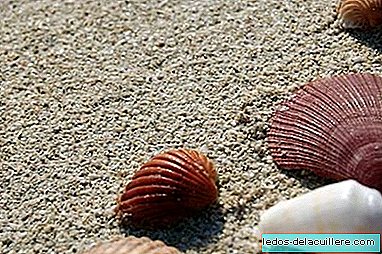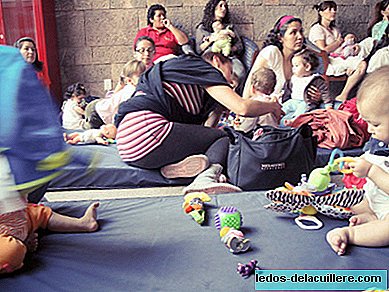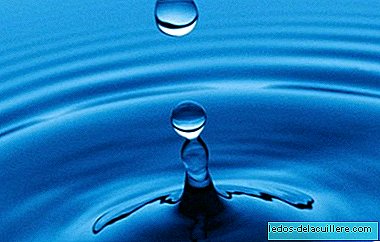
Water, fascinating and transparent, the best drink for all, is also one of the materials with which we can mount experiments with children in which they will discover the mysteries of nature and the forces of physics. With our science workshop we will continue to propose experiments with water I hope they serve for your children to have fun learning.
Archimedes knew it
Of course, we cannot leave one of the most famous experiments in history, the one who made Archimedes come out screaming from his "Eureka" bathtub. We will discover that an object introduced in a liquid shifts its volume.
We will need two large glass pots, one deep and the other flat, like a jug and a baking tray in which two liters of water fit and nothing but our hands. Ideally, they should be marked with the volumes, but if not, we can do it by measuring the water in a smaller one that has units of measure and transferring it. We will also use colored markers that paint on the glass and adhesive tape.
If we do not have it, we can do the experiment the same, but we cannot obtain exact measurements. Anyway, the idea is for children to discover that the water will be displaced more or less as the object is large Let's get inside.
We will fill both containers with a liter and a half of water and make a mark with the adhesive tape to make clear what the level was at the beginning of the experiment. Then first the child and then we will introduce the hand in the water to the wrist, marking a different color to where the water has risen on each occasion.
Children will see that our larger hand has displaced the water level higher, although theirs will have done so. In the case of the narrow container the ascent will be more evident than in the width, because having more space the water has risen proportionally to the volume of our hands but having more space to cover.
With older children, we can now work the volume quantities by transferring water to measure exactly, indirectly, the volume of our hands and their hands.
To finish, with a good preparation so that we do not stain too much, we will fill the jar to the brim and the water, when putting the hand, it will rise and it will overflow because it will not be able to contain the additional volume of the hand.
And, of course, then we go to the bathtub and we are entering it, first the children, then we and, if we want, together, to see how the level water rises. But be careful, do not overflow the bathtub and heat the neighbor below.

The ships do not sink
Surely children have often made paper boats or boarded an inflatable boat when they go to the beach, but today we will also see the reason why boats float and do not sink, even if they are not so light. Buoyancy depends on the way we give it, it depends on its total volume.
We will use a water bowl, a balloon full of air and modeling clay. We will fill the village and invite each child to make a plasticine ball, one for each and better of different colors. The plasticine balls will sink, of course, because they weigh more than water. So far, all expected.

But now we are going to build a floating boat. You can propose that they do different ways that you think can float like ships do. And this also has to do with Archimedes, although the story of how he found out whether or not the crown was made of pure gold may still be a bit complicated for the children of the house, so let's just limit ourselves to making our plasticine boats and when are a little older we will go a little further.
Water floats bodies that weigh less than her, like a balloon filled with air. The air-filled balloon weighs less than water and floats, but the plasticine ball sinks. We are going to "fill" the plasticine with air so that its total volume also contains a less heavy matter and we are going to make it larger in volume by extending it so that it can in addition to its own matter carry air.
We can go making flat boats until get a model that doesn't sink, with what we will have done with the children their first experience of naval engineering and the seed so that, when the time comes find at the beginning of Archimedes as an old friend and be ready to understand it by having laid the foundation since your childhood.
Apron on, lots of water to experience and desire to enjoy learning will be the essential ingredients for our home science workshops.


